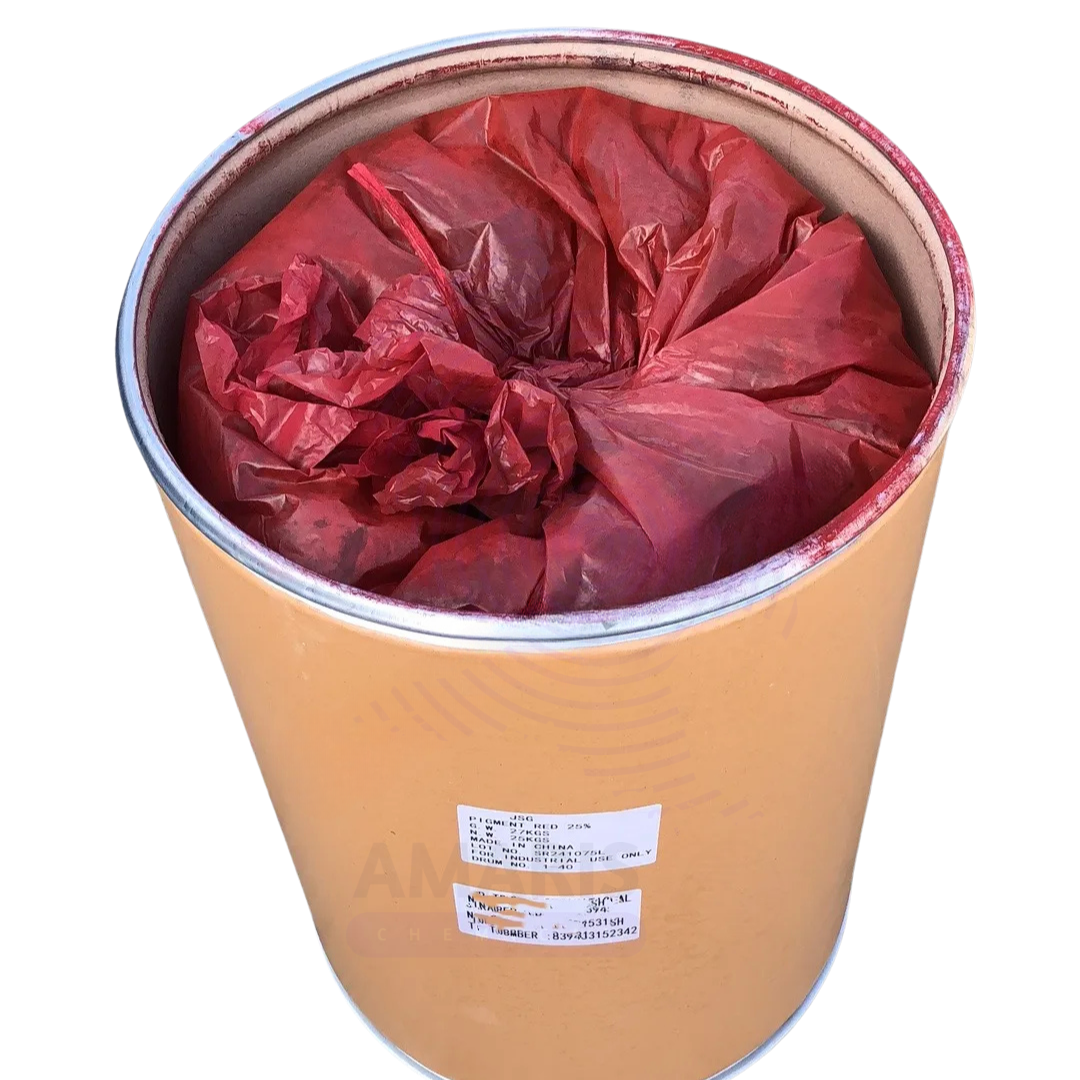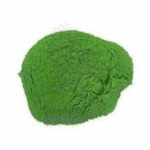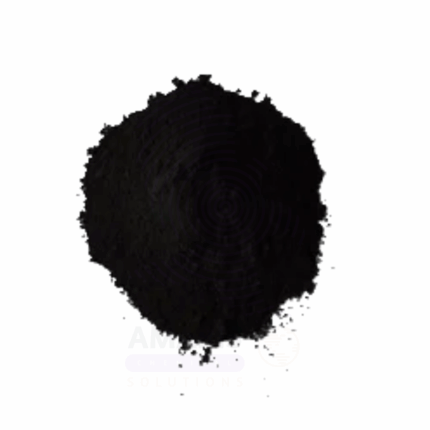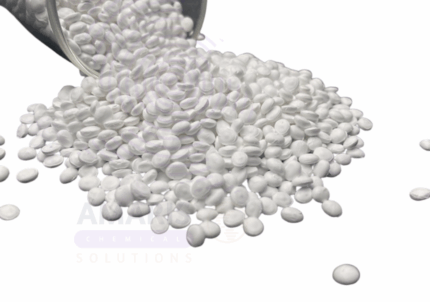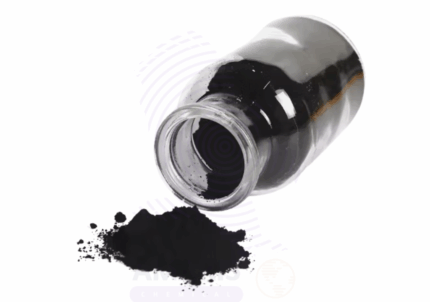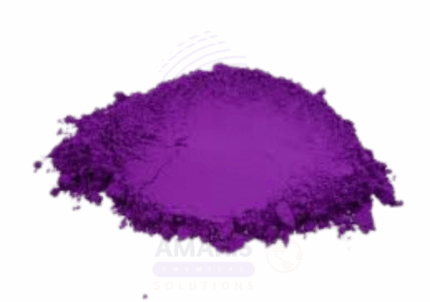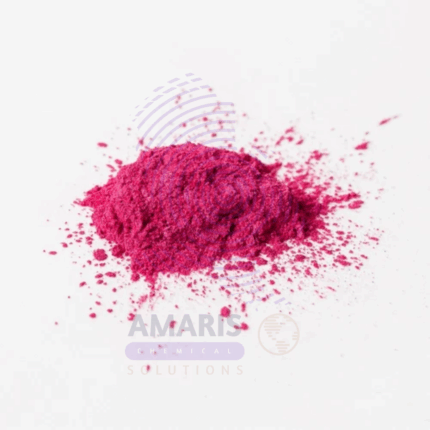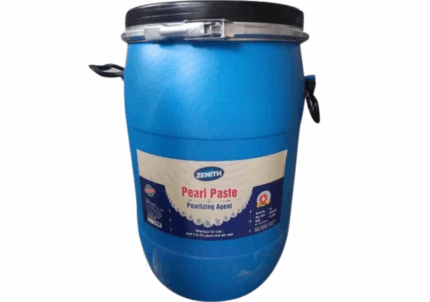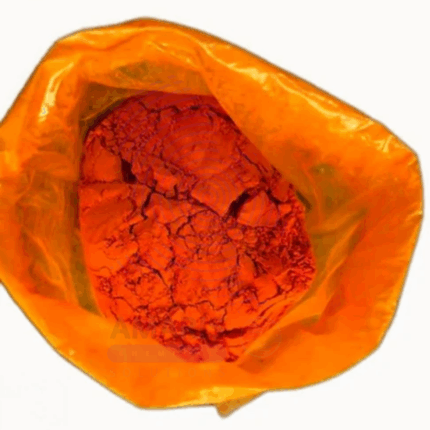Solvent oil red 24 OSH
Whatsapp Order
Solvent Oil Red 24 OSH is a bright, oil-soluble azo dye used primarily for coloring petroleum-based solvents, oils, waxes, and greases. Known for its excellent solubility in hydrocarbon mediums, this dye delivers a vivid red hue with good thermal stability and moderate lightfastness. Its OSH (Oil Soluble High) formulation ensures optimized dispersion in non-polar systems.
Solvent Oil Red 24 OSH is used in applications requiring visual identification, fuel marking, and product differentiation across industrial environments. It is available in powdered or granulated form and is manufactured to meet industrial-grade quality standards.
Description
Table of Contents
Toggle
Solvent oil red 24 OSH
Primary Uses
- Oil And Gas Chemicals
- Used as a fuel marker for diesel, gasoline, and kerosene to comply with regulatory requirements.
- Added to lubricating oils and hydraulic fluids for color differentiation and branding.
- Incorporated in transmission fluids, gear oils, and coolants for visual identification.
- Employed in greases and waxes to provide distinct coloration.
- Cleaning And Detergent Chemicals
- Occasionally used to color industrial solvents used in maintenance and degreasing applications.
Secondary Uses
- Paint & Coatings Chemicals
- Used in solvent-based coatings and varnishes to impart red shades to transparent or translucent formulations.
- Plastics And Polymer Manufacturing Chemicals
- Applied in non-aqueous plasticizer systems requiring color-coding or visual cues (non-food applications only).
- Specialty And Fine Chemicals
- Used in industrial-grade inks, wax colorants, and non-aqueous chemical formulations.
KEY PRODUCT FEATURES
1. Basic Identification Attributes
- Chemical Name: Solvent Red 24
- Trade Name: Solvent Oil Red 24 OSH
- CAS Number: 85-83-6
- EC Number: 201-635-8
- C.I. Number: Solvent Red 24 (C.I. 26105)
- HS Code: 3204.19
- Synonyms: Oil Red 24, C.I. Solvent Red 24, Red Dye for Hydrocarbons
2. Physical & Chemical Properties
- Physical State: Powder or granulated dye
- Color & Odor: Vivid red; odorless
- Solubility: Insoluble in water; soluble in oils and organic solvents
- Melting Point: 150 – 160°C
- Lightfastness: Moderate (varies by base oil and exposure conditions)
- Thermal Stability: High; suitable for oil-based processing
3. Safety & Hazard Attributes
- GHS Classification: May cause skin and eye irritation; suspected carcinogen (based on azo structure)
- Toxicity: Low acute toxicity; avoid prolonged exposure
- Exposure Limits: Refer to SDS for local regulatory limits
- Allergen Information: May release aromatic amines under extreme conditions
4. Storage & Handling Attributes
- Storage Conditions: Store in a cool, dry, and well-ventilated space
- Container Type: HDPE bags, fiber drums, or lined cartons
- Shelf Life: 24–36 months when properly stored
- Handling Precautions: Avoid dust generation; use PPE during bulk handling
5. Regulatory & Compliance Attributes
- Not approved for food, drug, or cosmetic use
- Manufactured in compliance with standard industrial dye regulations
- Subject to local and international rules for fuel dyeing and hazardous labeling
6. Environmental & Health Impact
- Biodegradability: Poor; persistent in the environment
- Ecotoxicity: Potentially harmful to aquatic organisms; handle with care
- Bioaccumulation: May bioaccumulate in aquatic species under continuous exposure
- Environmental Impact: Should not be released into natural waterways
SAFETY HANDLING PRECAUTIONS
Safety Handling Precautions
- PPE Required: Dust mask/respirator, gloves, goggles, and protective clothing
- Handling Guidelines: Use in ventilated environments; avoid contact with eyes and skin
First Aid Measures
- Inhalation: Move to fresh air; seek medical attention if symptoms occur
- Skin Contact: Wash with soap and water; remove contaminated clothing
- Eye Contact: Rinse with clean water for several minutes; seek medical help
- Ingestion: Rinse mouth; do not induce vomiting; consult a physician immediately
Firefighting Measures
- Fire Hazards: Combustible in powder form; may form dust-air mixtures
- Extinguishing Media: Foam, dry powder, CO₂, or water spray
- Special Precautions: Use self-contained breathing apparatus in enclosed areas
- Hazardous Combustion Products: Carbon monoxide, aromatic hydrocarbons, and nitrogen oxides
Related products
Acid Black 2 Powder
Acid Black 2 Powder is a synthetic anionic disazo dye belonging to the acid dye class, specifically formulated for intense black coloration with excellent light and wash fastness properties. This high-purity powder (100% active) exhibits superior solubility in aqueous solutions, making it particularly suitable for dyeing protein-based fibers like wool, silk, and nylon under acidic conditions. As a chromium-complex dye, it delivers enhanced color depth and improved fastness characteristics compared to non-metalized acid dyes. The powder form ensures precise dosing, consistent batch-to-batch reproducibility, and long-term stability when stored properly. Its molecular structure features sulfonic acid groups that facilitate strong ionic bonding with amino groups in fibers, resulting in vibrant, penetration-rich coloration with minimal bleeding.
Black 7 Dye
Black 7 Dye, also known as CI 26150 or D&C Black No. 7, is a synthetic black pigment primarily composed of carbon-based aromatic compounds. It is a high-purity, oil-dispersible colorant derived from oxidized aniline and related intermediates. Known for its intense black shade and strong tinting strength, Black 7 Dye is widely used in the cosmetics, personal care, pharmaceutical, and specialty colorant industries.
This dye is chemically stable, lightfast, and compatible with oils, esters, waxes, and synthetic bases, making it suitable for both leave-on and rinse-off formulations. It is particularly favored in products requiring bold color expression, such as eye makeup, hair dyes, and tattoo inks. Surface-treated forms are also available to enhance dispersibility and formulation compatibility.
Masterbatch White ( PEW60)
Masterbatch White PEW60 is a high-quality white pigment masterbatch designed for incorporation into polyethylene (PE) and other polyolefin resins. Containing 60% titanium dioxide (TiO₂) pigment, it provides excellent whiteness, opacity, and brightness to plastic products. PEW60 improves aesthetic appeal and surface finish while maintaining the mechanical properties of the base resin. It is widely used in film extrusion, injection molding, blow molding, and other plastic manufacturing processes to produce a consistent, bright white color.
Printofix Black H-TR
Printofix Black H-TR is a high-quality black textile printing paste designed for use in screen printing applications. It provides excellent color strength, fastness, and adhesion on a variety of fabrics including cotton, polyester, and blended textiles. The formulation ensures sharp, vibrant prints with good wash and rub resistance, making it ideal for industrial and fashion textile printing.
Purple Pigment
Purple Pigment is a colorant formulation containing 10% concentrated purple pigment dispersed in a carrier matrix. It is used to impart purple coloration in a wide range of applications, offering excellent color stability, UV resistance, and compatibility with various substrates. This pigment preparation is widely utilized in plastics, coatings, inks, textiles, cosmetics, and construction materials, where consistent hue and dispersion are essential.
Raspberry Red Pigment
Raspberry Red Pigment is a concentrated dispersion of synthetic red pigment particles formulated to deliver a rich raspberry-red color. It offers excellent lightfastness, heat stability, and chemical inertness, making it ideal for applications in paints, coatings, plastics, inks, and specialty industrial uses. This pigment ensures consistent color strength and durability across various substrates and manufacturing processes.
Sparkle 660 (Pearlizing Agent)
Sparkle 660 (Pearlizing Agent) is a specialized pearlizing agent used to impart a lustrous, iridescent finish to various products. It typically consists of micronized mica coated with titanium dioxide or other oxides to create a shimmering pearl effect. This additive is widely employed in personal care, cosmetics, and industrial formulations to enhance visual appeal with a pearlescent shine.
Waxol Solvent Yellow 2
Waxol Solvent Yellow 2 is a synthetic solvent dye known for its bright yellow hue and excellent solubility in organic solvents such as oils, waxes, hydrocarbons, and plasticizers. It provides consistent and vibrant yellow coloration in solvent-based systems, making it suitable for use in plastics, inks, coatings, and lubricants. The dye offers good chemical resistance and lightfastness, ensuring durability and stability of color in industrial and decorative applications. Waxol Solvent Yellow 2 is widely used where water-soluble dyes are unsuitable, providing high tinting strength and compatibility with various non-polar substrates.


 Preservatives(food)
Preservatives(food) Flavor Enhancers
Flavor Enhancers Acidulants
Acidulants Sweeteners
Sweeteners Antioxidants
Antioxidants Colorants(food)
Colorants(food) Nutraceutical Ingredients (food)
Nutraceutical Ingredients (food) Nutrient Supplements
Nutrient Supplements Emulsifiers
Emulsifiers
 Collectors
Collectors Dust Suppressants
Dust Suppressants Explosives and Blasting Agents
Explosives and Blasting Agents Flocculants and Coagulants
Flocculants and Coagulants Frothers
Frothers Leaching Agents
Leaching Agents pH Modifiers
pH Modifiers Precious Metal Extraction Agents
Precious Metal Extraction Agents
 Antioxidants(plastic)
Antioxidants(plastic) Colorants (Pigments, Dyes)
Colorants (Pigments, Dyes) Fillers and Reinforcements
Fillers and Reinforcements Flame Retardants
Flame Retardants Monomers
Monomers Plasticizers
Plasticizers Polymerization Initiators
Polymerization Initiators Stabilizers (UV, Heat)
Stabilizers (UV, Heat)
 Antifoaming Agents
Antifoaming Agents Chelating Agents
Chelating Agents Coagulants and Flocculants
Coagulants and Flocculants Corrosion Inhibitors
Corrosion Inhibitors Disinfectants and Biocides
Disinfectants and Biocides Oxidizing Agents
Oxidizing Agents pH Adjusters
pH Adjusters Scale Inhibitors( water)
Scale Inhibitors( water)
 Antioxidants(cosmetic)
Antioxidants(cosmetic) Emollients
Emollients Fragrances and Essential Oils
Fragrances and Essential Oils Humectants
Humectants Preservatives
Preservatives Surfactants(cosmetic)
Surfactants(cosmetic) Thickeners
Thickeners UV Filters
UV Filters
 Fertilizers
Fertilizers Soil Conditioners
Soil Conditioners Plant Growth Regulators
Plant Growth Regulators Animal Feed Additives
Animal Feed Additives Biostimulants
Biostimulants Pesticides (Herbicides, Insecticides, Fungicides)
Pesticides (Herbicides, Insecticides, Fungicides)
 Active Pharmaceutical Ingredients (APIs)
Active Pharmaceutical Ingredients (APIs) Excipients
Excipients Solvents(pharmaceutical)
Solvents(pharmaceutical) Antibiotics
Antibiotics Antiseptics and Disinfectants
Antiseptics and Disinfectants Vaccine Adjuvants
Vaccine Adjuvants Nutraceutical Ingredients (pharmaceutical)
Nutraceutical Ingredients (pharmaceutical) Analgesics & Antipyretics
Analgesics & Antipyretics
 Analytical Reagents
Analytical Reagents Solvents(lab)
Solvents(lab) Chromatography Chemicals
Chromatography Chemicals Spectroscopy Reagents
Spectroscopy Reagents microbiology-and-cell-culture-reagents
microbiology-and-cell-culture-reagents Molecular Biology Reagents
Molecular Biology Reagents Biochemical Reagents
Biochemical Reagents Inorganic and Organic Standards
Inorganic and Organic Standards Laboratory Safety Chemicals
Laboratory Safety Chemicals Specialty Laboratory Chemicals(Special Laboratory Equipment)
Specialty Laboratory Chemicals(Special Laboratory Equipment)
 Demulsifiers
Demulsifiers Hydraulic Fracturing Fluids
Hydraulic Fracturing Fluids Scale Inhibitors(oil)
Scale Inhibitors(oil) Surfactants(oil)
Surfactants(oil) Drilling Fluids
Drilling Fluids
 Dyes and Pigments
Dyes and Pigments Bleaching Agents
Bleaching Agents Softening Agents
Softening Agents Finishing Agents
Finishing Agents Antistatic Agents
Antistatic Agents
 Admixtures
Admixtures Waterproofing Agents
Waterproofing Agents Sealants and Adhesives
Sealants and Adhesives Curing Compounds
Curing Compounds Concrete Repair Chemicals
Concrete Repair Chemicals Anti-Corrosion Coatings
Anti-Corrosion Coatings
 Surfactants(cleaning)
Surfactants(cleaning) Builders
Builders Enzymes
Enzymes Solvents (Cleaning)
Solvents (Cleaning) Fragrances
Fragrances
 Electronic Chemicals
Electronic Chemicals Catalysts
Catalysts Lubricants
Lubricants Photographic Chemicals
Photographic Chemicals Refrigerants
Refrigerants Automotive chemicals
Automotive chemicals Pyrotechnic Chemicals
Pyrotechnic Chemicals
 Biodegradable Surfactants
Biodegradable Surfactants Bio-based Solvents
Bio-based Solvents Renewable Polymers
Renewable Polymers Carbon Capture Chemicals
Carbon Capture Chemicals Wastewater Treatment Chemicals
Wastewater Treatment Chemicals
 Pigments
Pigments Solvents(paint)
Solvents(paint) Specialty Coatings
Specialty Coatings Binders/Resins
Binders/Resins Additives
Additives Driers
Driers Anti-Corrosion Agents
Anti-Corrosion Agents Functional Coatings
Functional Coatings Application-Specific Coatings
Application-Specific Coatings
 Fresh Herbs
Fresh Herbs Ground Spices
Ground Spices Whole Spices
Whole Spices Spice Blends
Spice Blends Dried Herbs
Dried Herbs
 Leavening Agents
Leavening Agents Dough Conditioners
Dough Conditioners Flour Treatments
Flour Treatments Fat Replacers
Fat Replacers Decoratives
Decoratives Preservatives(baking)
Preservatives(baking)
 Plasticizers & Softeners
Plasticizers & Softeners Reinforcing Agents
Reinforcing Agents Adhesion Promoters
Adhesion Promoters Vulcanizing Agents
Vulcanizing Agents Antidegradants
Antidegradants Blowing Agents
Blowing Agents Fillers & Extenders
Fillers & Extenders Accelerators & Retarders
Accelerators & Retarders